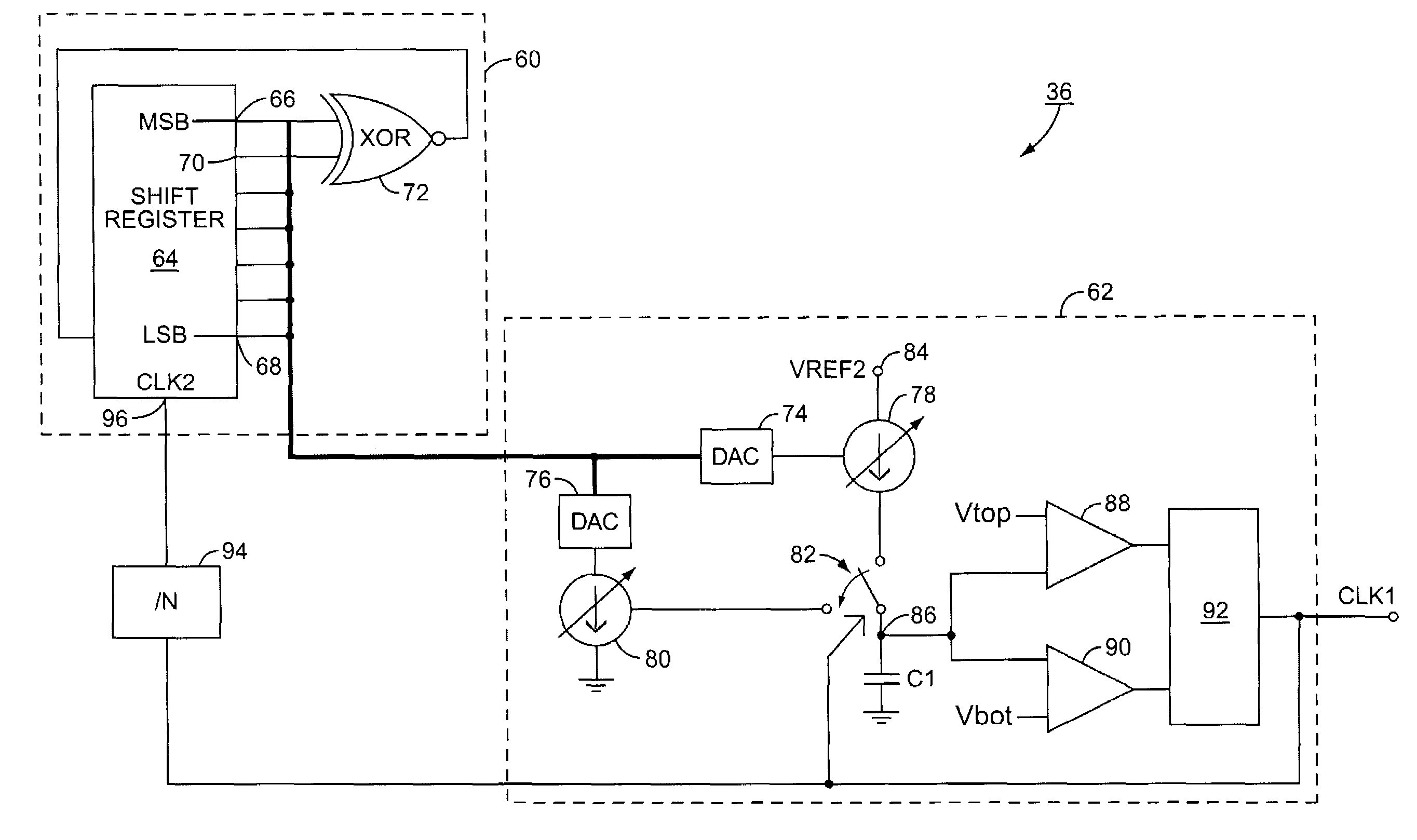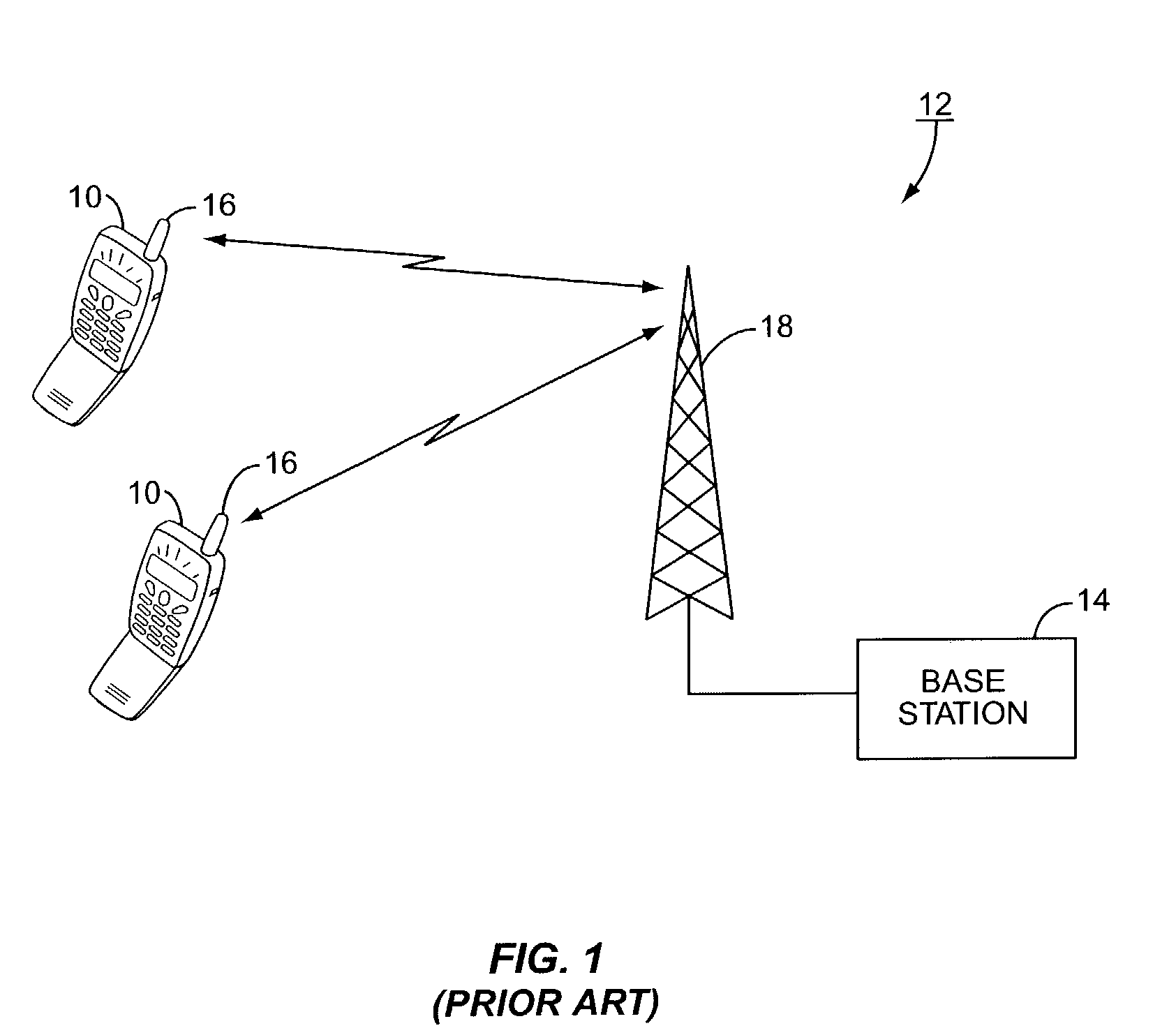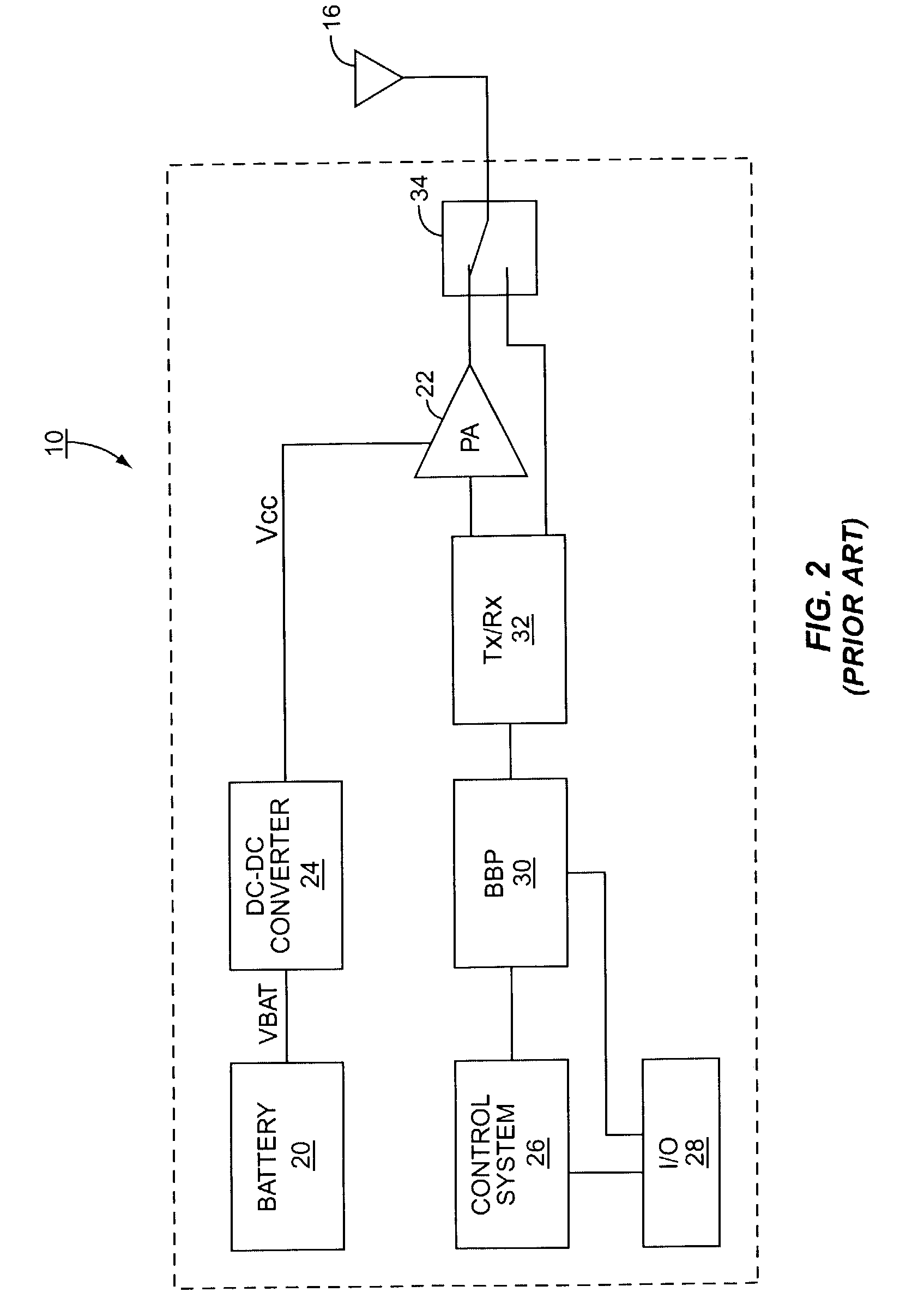DC-DC converter with reduced electromagnetic interference
a technology of electromagnetic interference and converter, applied in the field of dc-dc converter, can solve the problems of imposing more restrictive limitations, interfering with other electronic devices such as computers or televisions, and communication may interfere with other electronic devices, so as to achieve the effect of reducing spurious emissions
- Summary
- Abstract
- Description
- Claims
- Application Information
AI Technical Summary
Benefits of technology
Problems solved by technology
Method used
Image
Examples
first embodiment
[0038]In a first embodiment, illustrated in FIG. 4, the oscillator 36 includes a pseudo random number generator 60 and a clock generation circuit 62. The pseudo random number generator 60 includes a seven bit shift register 64 with a most significant bit (MSB) output 66 and a least significant bit (LSB) output 68. Two outputs (which in the exemplary embodiment are the MSB output 66 and the next most significant bit output 70) are directed to an exclusive OR (XOR) gate 72. The output of the XOR gate 72 is fed back into an input of the shift register 64, thereby causing the shift register 64 to count in a pseudo random fashion and thus output a pseudo random number. This is known as a linear feedback shift register (LFSR) and is well known in the art. Other pseudo random number generators 60 could also be used if needed or desired. Likewise, the number of bits in the shift register may vary from embodiment to embodiment as needed or desired.
[0039]In addition to the outputs sent to the...
second embodiment
[0050]the clock generation circuit 62 is presented in FIG. 6. In this embodiment, the pseudo random number generator (PNG) 60 outputs the pseudo random number, which in turn controls switches 152, 154, 156. The switches 152, 154, 156 selectively activate capacitors C2, C3, and C4 respective to node 158. It should be appreciated that the pseudo random number output by the pseudo random number generator 60 maps which capacitors are activated. Also, there may be more or fewer capacitors than C2–C4. For example, if the pseudo random number generator 60 used a seven bit register, there might be seven capacitors, with each bit mapping to a capacitor. As another alternative, a varactor could be used in place of a plurality of capacitors, and the amount of capacitance would be set by the pseudo random number.
[0051]In this context, the capacitors C2, C3, and C4 may be physically connected to the node regardless of the position of the switches 152, 154, 156, but the capacitors C2, C3, and C4 ...
third embodiment
[0057]A third embodiment is illustrated in FIG. 8. The PNG 60 outputs a pseudo random number to a DAC 250 that in turn controls a variable current source 252. The variable current source 252 outputs a current that is mirrored from a first Field Effect Transistor (FET) 254 to a second FET 256 and a third FET 258. The current mirrored into the second FET 256 forces a current to exist in a fourth FET 260. The current in the fourth FET 260 is mirrored into a fifth FET 262. While FETs are illustrated, other current mirroring mechanisms could also be used.
[0058]The third FET 258 acts as a current sink and the fifth FET 262 acts as a current source for the capacitor C1 depending on the position of the switch 264. This embodiment has the advantage of taking up less space in a semiconductor than the two DAC arrangement of FIG. 4, but at the expense of wasted current.
[0059]The comparators 88, 90 measure the voltage at node 266 and set and reset the flip-flop 92 much as previously described. T...
PUM
 Login to View More
Login to View More Abstract
Description
Claims
Application Information
 Login to View More
Login to View More - R&D
- Intellectual Property
- Life Sciences
- Materials
- Tech Scout
- Unparalleled Data Quality
- Higher Quality Content
- 60% Fewer Hallucinations
Browse by: Latest US Patents, China's latest patents, Technical Efficacy Thesaurus, Application Domain, Technology Topic, Popular Technical Reports.
© 2025 PatSnap. All rights reserved.Legal|Privacy policy|Modern Slavery Act Transparency Statement|Sitemap|About US| Contact US: help@patsnap.com



